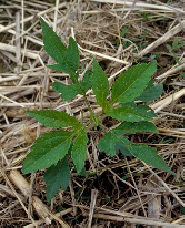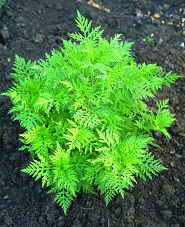A Tale of Two Broadleaf Weeds: Giant and Common Ragweed
February 24, 2020

Growing season. It’s the best of times. But if you don’t protect your yields from prolific weeds, it can also be the worst of times.
Two prolific, broadleaf weeds that threaten your yields are giant ragweed and common ragweed. By learning the key characteristics of each, as well as management strategies, you can help ensure that your growing season is truly the best of times for your crop.
The problem of ragweed
Prevalent throughout the Midwest, both giant ragweed and common ragweed can cause yield losses. Both varieties are monoecious, having separate male and female flowers on the same plant. This allows for cross-pollination that leads to much variation in genetic diversity and a greater potential for herbicide resistance. While there are some similarities, the two ragweed varieties have key differences that make them problematic.
Giant Ragweed
Emerging late in March and blooming from July through October, giant ragweed has the potential to grow up to 16 feet tall in fertile soils. This weed has an initial competitive advantage over crops due to its fast growth rate. Giant ragweed is more prevalent in tilled fields, as tillage mixes the seeds into the soil where they can escape predation. It is common for seedlings to emerge from as far as four inches below the surface. Mature giant ragweed plants can produce up to 5,100 seeds.i If left unmanaged, one giant ragweed plant per ten square feet can reduce yield up to 55 percent in corn.ii
Common Ragweed
Common ragweed is a summer annual that can grow three to six feet tall. It thrives in low-fertility soil and is most prevalent in fields with reduced- or no-till practices. At full maturity, a single common ragweed plant can produce up to 62,000 seeds that can be added to the weed seed bank. If left unmanaged, a weed density of five common ragweed plants per acre can result in yield losses of up to 21 percent in corn.iii
Identification
Proper identification of ragweed is essential for selecting strategies that will manage and control your problem weeds.
Giant Ragweed

To identify giant ragweed, look for:iv
- Hairy stems
- Round, thick cotyledons with a purple hypocotyl
- Hairy leaves that are four to eight inches wide and six inches long and have opposite arrangement around the stem
- Leaves that are cut into three or five lobes with toothed edges
- Green flowers with small, slender stems at the end of branches or bases of upper leaves
Common Ragweed
